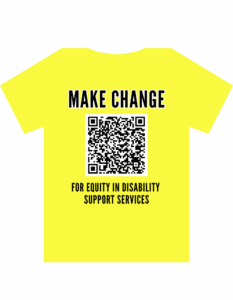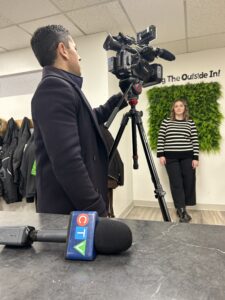History of the Sunflower Lanyard Program
The Sunflower Lanyard program was introduced in 2016 at London Gatwick Airport,
initially designed to identify passengers with hidden disabilities who may require
additional assistance while traveling. Its creators aimed to provide a subtle yet visible
means for airport staff to recognize that the wearer may need extra help, time, or
understanding while navigating through the airport. Since its inception, this discrete
signaling system has gained global adoption by major airports, supermarkets, railway and
coach stations, leisure facilities, healthcare organizations, various businesses, and other
entities, allowing for increased support and understanding for individuals with invisible
disabilities.
Current Uses of Sunflower Lanyards
Presently, the Sunflower Lanyard is utilized to assist individuals with hidden disabilities
in various settings. Its recognition spans over 130 airports, more than 450 universities,
schools, and colleges, the railway network, theme parks, supermarkets, leisure facilities,
healthcare, financial services, emergency services, theaters, and over 350 charities in the
UK. This program has also been implemented globally, being acknowledged in countries
such as the United States, Australia, Belgium, Canada, Denmark, Ireland, the
Netherlands, New Zealand, France, Norway, Lithuania, and the United Arab Emirates.
The lanyard supports individuals with a diverse range of hidden disabilities, including but
not limited to neurodivergence, hearing loss, epilepsy, diabetes, chronic pain, autism,
dementia, Crohn’s, mental health conditions, mobility issues, speech and hearing
impairments, and sensory loss.
Where Sunflower Lanyards Can Be Used
Sunflower Lanyards are useful in a variety of settings to support individuals with
invisible disabilities. These extend to:
1. Airports: Recognized in numerous airports worldwide, including Toronto Pearson
Airport, to provide additional assistance and accommodations to travelers wearing
them.
2. Public Transportation: Used on buses, trains, and subway systems in some regions
to offer assistance or additional time for boarding and alighting for wearers.
3. Retail and Shopping Centers: Acknowledged by stores and shopping malls to facilitate
a more understanding and supportive shopping experience.
4. Entertainment Venues: Employed in cinemas, theaters, and theme parks to offer
assistance or special accommodations to lanyard wearers.
5. Educational Institutions: Recognized by certain schools and universities to provide
support to students with invisible disabilities in accessing education and facilities.
6. Healthcare Facilities: Adopted by hospitals and clinics to identify patients who
may need extra support or patience from healthcare professionals.
7. Public Events and Conferences: Acknowledged by organizers of public events,
exhibitions, and conferences, where wearers are offered support or special
accommodations.
How the Sunflower Lanyard Program Works
This program is designed to support individuals with invisible disabilities by providing a
discreet means to indicate that they may need additional support, patience, or
understanding when navigating public spaces. The Sunflower Lanyard operates on the
following principles:
Identification: This distinct green lanyard featuring a pattern of sunflowers is worn
around the neck and can be worn with or without an attached ID card, signifying to others
that the wearer has an invisible disability.
Availability: Sunflower Lanyards can be obtained from customer service desks,
participating locations, or online for free, allowing individuals to choose whether they
wish to signal their need for extra support in a subtle manner.
Voluntary Use: Wearing a Sunflower Lanyard is entirely optional, providing individuals
the choice to indicate their need for additional support without having to disclose details
about their condition.
Staff Training: Staff members across participating organizations are trained to recognize
the lanyard and understand that it signifies the wearer may have invisible disabilities,
ensuring they can offer appropriate assistance and understanding
Assistance Offered: The nature of the support provided can vary depending on the setting
and specific individual needs. It may include more time to complete tasks, offering
clearer guidance, access to priority seating or queues, and being more patient and
understanding during interactions.
Privacy: The program respects individuals’ privacy by allowing them to signal their need
for support without disclosing the specifics of their disability to others.
Awareness and Inclusivity: In addition to practical assistance, the Sunflower Lanyard
program raises awareness about invisible disabilities, cultivating a culture of inclusivity
and understanding in society.
Importance of Sunflower Lanyards for Accessibility
The Sunflower Lanyard program is vital for enhancing accessibility and
inclusivity in public spaces due to several key factors:
Raising Awareness: It promotes awareness and understanding of hidden
disabilities, fostering empathy and contributing to a more inclusive environment.
Empowering Individuals: It provides a discrete communication channel for
individuals with hidden disabilities, enabling them to access support without
disclosing personal medical information.
Improving Experiences: By ensuring individuals receive the necessary support, the
program greatly enhances their experiences in public spaces, reducing anxiety and
stress.
Encouraging Inclusivity: The adoption of Sunflower Lanyards by a wide range of
organizations sends a powerful message about the importance of inclusivity and
accessibility, encouraging other entities to improve their support for individuals
with disabilities.
As the Sunflower Lanyard Program continues to gain traction and is adopted by an
increasing number of organizations worldwide, the Sunflower Lanyard program
exemplifies the transformative impact of fostering understanding, empathy, and support
for individuals with hidden disabilities. Its role in promoting accessibility and inclusivity
is invaluable, and its expanding influence heralds a future where all individuals,
irrespective of their abilities, are embraced and supported in navigating the world around
them.
To learn more about the Sunflower Lanyard Program visit: https://hdsunflower.com/




